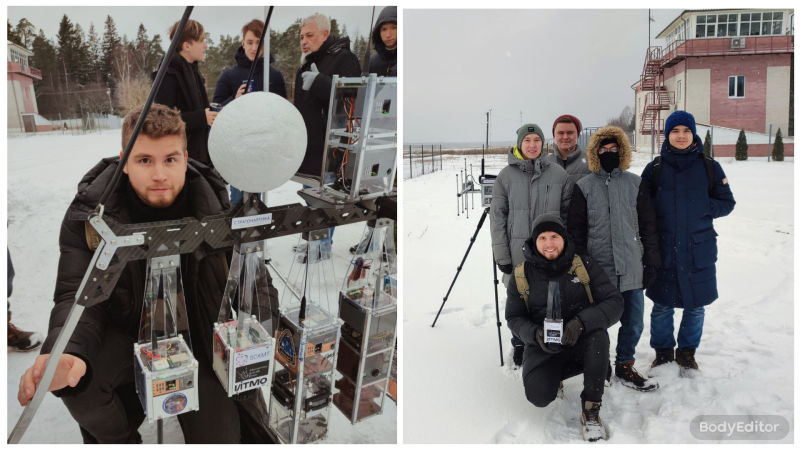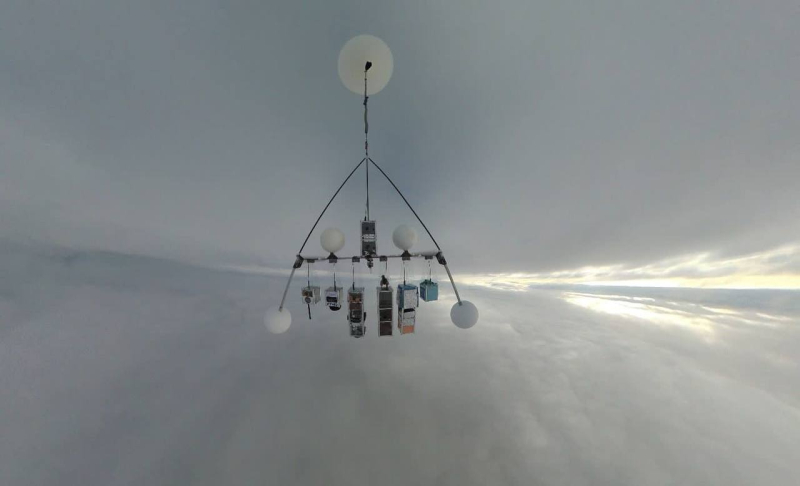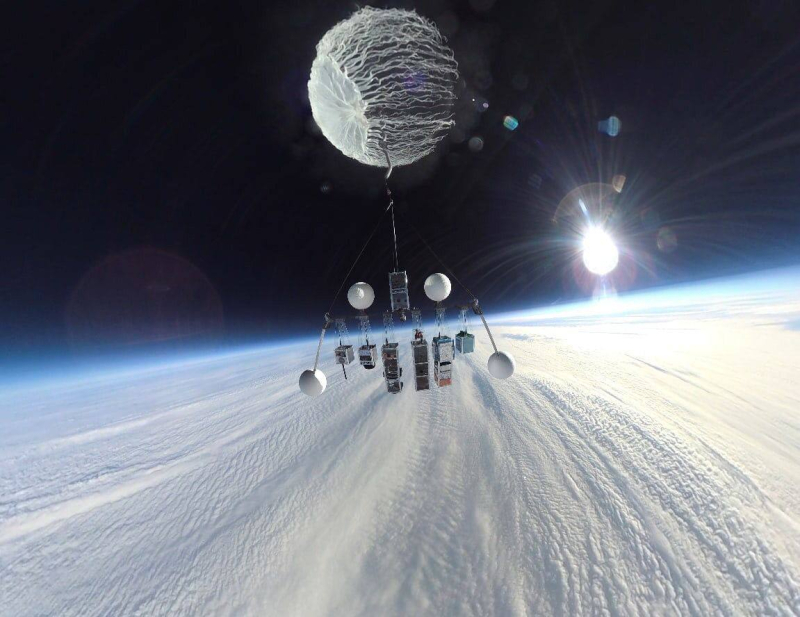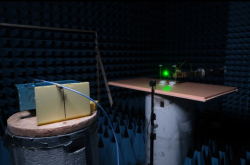We are so used to gravity that we barely notice it, however, it plays an important role in the way our bodies work – ultimately, every system in our body, from our blood vessels to our bones and inner ear, depends on gravity. That’s why being without it, in weightlessness, for extended periods of time can be damaging to the body: the muscles become weaker, the heart gets less active (causing a decreased oxygen flow to the brain), and the bones grow more fragile, increasing the risks of traumas and osteoporosis.
In order to find out how lower gravity can affect the formation of bone tissue, researchers from ITMO University used specially selected reaction-diffusion systems. Within the Stratosphere Satellite research program, they sent to space several test tubes with hydroxylapatite, a mineral that is a key component in skeletal bones and teeth. During the flight, patterns of the material formed within the test tubes.
“It all started with a project we developed within the Smart Materials course: we had to come up with a material that would allow single-cell organisms to survive in space. Having completed the project, we thought, “What if we could actually do this experimentally?” I assembled a team and we spent a month analyzing related articles before we realized that a bunch of similar experiments had already been conducted. But the idea was too good to part with it, so I suggested a similar experiment at a conference I attended. Space engineers from the Bauman Moscow State Technical University got interested, so we decided to apply for the Stratosphere Satellite project,” says Daudi Dauddin, the head of the project and a student at ITMO’s ChemBio Cluster.

Left: Daudi Dauddin with the aerostat carrying the participants' CubeSats. Right: the research team: front – Daudi Dauddin; back, left to right: Ramil Gaynutdinov, German Yandalin, Azamat Nuraev, and Roman Arduvanov. Photo courtesy of the team
Apart from Daudi Dauddin, the team includes Daniil Silin, an infochemistry student at ITMO, who is responsible for the chemical aspect of the project, and is supervised by Ekaterina Skorb, the head of the university’s Infochemistry Center, and Svetlana Ulasevich, an associate professor at the center and the head of the biomimetic materials group. German Yangalin, a student at the Bauman Moscow State Technical University, and Ramil Gaynutdinov, a student at the Moscow Aviation Institute, were responsible for assembling the team’s CubeSat, the satellite with experimental samples inside, while students of the Bashkortostan Quantorium Azamat Nuraev and Roman Arduvanov developed the experimental software.
The experiment in detail
To be able to identify the specifics of bone tissue formation in low gravity, the researchers analyzed the periodic precipitation of hydroxylapatite not only in the stratosphere but also in the lab on Earth in room and low temperatures. Having first prepared a hydrogel based on agar and sodium phosphate, the researchers then added calcium chloride to the system right before the launch, repeating the same steps in the ground-based lab.
This reaction results in Liesegang rings, concentric circles of hydroxylapatite precipitation. You could have seen such patterns in agate or jasper rock formations, where they too are the result of periodic precipitation. This reaction is often used in physics and chemistry, as well as in decorative art. In Earth’s gravity, such rings typically form in gelatin and collagen media, and the process of their crystallization in the stratosphere is currently analyzed by the researchers.
In order to obtain the sample, researchers attached one of the tubes with the substance to the CubeSat, supplied with a camera and an abundance of sensors, that were transmitting the probe’s location, surrounding temperature and radiation, as well as other parameters to the lab during the flight. Moreover, the CubeSat had a special compartment for more test tubes that was developed and 3D printed by German Yangalin.
CubeSats submitted by all participants were attached to an aerostat, an aircraft lifted by buoyant gas (similar to a hot air balloon). As the aerostat lifts higher and the surrounding atmospheric pressure decreases, the balloon keeps expanding until it bursts (in this case, it happened at an altitude of about 25 kilometers), lowering down to Earth on a stabilizing system. The flight lasted three hours and the aerostat launched by the team was swept 90 kilometers from the starting location. After it was located thanks to its GPS sensor, it was delivered to the researchers for further analysis.
Having compared the acquired samples, the students discovered a substantial difference between the crystallization of Liesegang rings in normal and lower gravity. According to the current hypothesis, the stratospheric samples might contain Turing patterns, which form as a result of a reaction-diffusion mechanism.

The research satellite at the altitude of 10 km. Photo courtesy of Stratonavtika company
What next
Now, the researchers from ITMO’s Infochemistry Center will need to analyze the procured samples, identifying the structure’s diversity coefficient, as well as its phase and crystal composition. These tests will help determine whether Turing patterns have actually formed in the samples sent to the stratosphere. At the same time, the researchers will analyze the samples that remained on Earth.
As a result of this experiment, the scientists will be able to tell how various conditions in the stratosphere, namely, radiation, atmospheric pressure, and temperature, affect the formation of hydroxylapatite patterns. Thanks to this data, the researchers will be able to explain the process of bone tissue formation in lower gravity, which can be taken into account in development of future space stations. The project will culminate in a scientific publication that will describe the experiment and acquired results.
Stratosphere Satellite is a national program that aims to interest young people in design, engineering, and aerospace research, as well as equip them with experience in these fields. The team with ITMO students became one of the ten finalists, whose projects were launched into the stratosphere. Each team received a special kit with parts of their CubeSat, which the participants assembled and programmed on their own.





